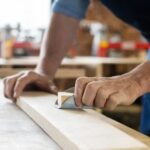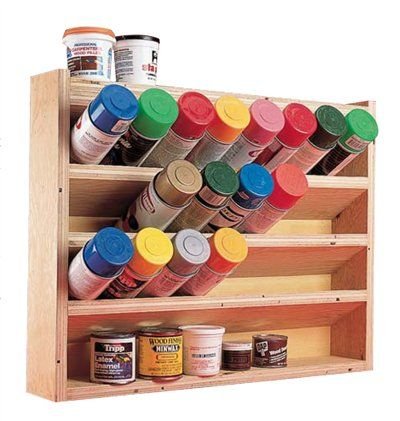Patterned desktop woodworking has become a popular trend in modern interior design, adding a touch of personalization and artistry to workspaces and living areas. This article provides a comprehensive guide on how to create stunning patterned desktop woodworking, from selecting the right materials to adding finishing touches.
With the right tools and materials, anyone can embark on a patterned desktop woodworking project. From choosing the appropriate wood type to carving tools, sandpaper, and protective gear, this article will provide all the necessary information to get started. Whether it’s geometric designs, nature-inspired patterns, or traditional motifs, readers will also find tips on selecting a suitable pattern for their woodworking project.
Preparation is key in achieving a beautiful patterned desktop woodworking piece. Step-by-step instructions on preparing the wood for the project, including sanding, staining, and sealing will be covered in detail. Additionally, techniques such as carving, wood burning, and inlay work will be explored in creating the chosen pattern on the wood. For those looking for inspiration and ideas, stunning examples of patterned desktop woodworking will also be showcased in this article.
Get ready to unleash your creativity and enhance your living or workspace with the artistry of patterned desktop woodworking. Whether you’re a seasoned woodworker or just starting out, this article will guide you through every step of the process to create beautiful and personalized pieces that will elevate any interior space.
Tools and Materials
Woodworking is a craft that requires precision, patience, and the right tools and materials to bring your vision to life. When it comes to patterned desktop woodworking, having the proper tools and materials is essential to creating stunning and durable pieces. Whether you’re a seasoned woodworker or just starting out, understanding what you need for patterned desktop woodworking is crucial.
One of the most important aspects of any woodworking project is choosing the right type of wood. For patterned desktop woodworking, you’ll want to select a wood species that is both visually appealing and suitable for intricate designs. Some popular choices for desktop woodworking include cherry, mahogany, maple, and oak. Each type of wood has its own unique characteristics that can enhance the overall look of your patterned design.
In addition to selecting the right type of wood, having the proper carving tools is essential for creating intricate patterns. Carving tools come in various shapes and sizes, such as chisels, gouges, and knives, and are used to remove wood material to create patterns. Investing in high-quality carving tools will not only make the process easier but will also ensure clean and precise cuts in your woodworking project.
Another necessary tool for patterned desktop woodworking is sandpaper. Sanding the wood surface smooth before applying any finish or paint can result in a professional-looking final product.
| Tools | Materials |
|---|---|
| Chisels | Wood Types (cherry, mahogany, maple, oak) |
| Gouges | Carving Tools |
| Sanding Blocks | Sandpaper |
Choosing a Pattern
When it comes to patterned desktop woodworking, the choice of pattern is a critical factor in creating a visually appealing and unique piece. Whether you are aiming for a modern, rustic, or traditional look, the pattern you choose will set the tone for the entire project. There are several factors to consider when selecting a suitable pattern for your desktop woodworking project.
Geometric Designs
Geometric patterns are a popular choice for desktop woodworking projects due to their versatility and modern appeal. From simple lines and shapes to intricate latticework and tessellations, geometric designs can add a contemporary touch to any workspace. Consider using contrasting wood tones or incorporating different wood species to create eye-catching geometric patterns.
Nature-Inspired Patterns
Nature-inspired patterns bring an organic and soothing feel to desktop woodworking projects. From floral motifs and leafy patterns to animal-inspired designs, there are endless possibilities for incorporating nature into your woodworking project. Consider using wood carving techniques to achieve intricate details in your nature-inspired pattern, bringing the beauty of the outdoors into your interior space.
Traditional Motifs
For those who appreciate classic elegance, traditional motifs such as acanthus leaves, rosettes, or scrollwork can add a timeless charm to your desktop woodworking project. These intricate and ornate patterns often require skillful carving or inlay work, but the results are well worth the effort. Traditional motifs can add a sense of history and craftsmanship to your woodworking piece, making it a conversation starter in any room.
By considering these tips when choosing a pattern for your patterned desktop woodworking project, you can ensure that your finished piece reflects your personal style and complements your interior design aesthetic. Whether you opt for geometric designs, nature-inspired patterns, or traditional motifs, your chosen pattern will be the focal point of your woodworking creation. With careful consideration and attention to detail, you can create a stunning patterned desktop woodworking piece that adds both beauty and functionality to your workspace.
Preparing the Wood
Before diving into the actual creation of patterned desktop woodworking, it is crucial to properly prepare the wood to ensure a smooth and polished finish. The first step in this process is sanding the wood. This involves using various grades of sandpaper to remove any rough spots, blemishes, or uneven areas on the surface of the wood. Depending on the type of wood and its condition, different grits of sandpaper may be required to achieve the desired smoothness.
Once the wood has been sanded to perfection, the next step is staining. This adds color and depth to the wood, enhancing its natural beauty. There are countless options for wood stain colors, from light and natural hues to rich and dark tones. It is important to apply the stain evenly and consistently across the entire surface of the wood to avoid splotchiness or discoloration.
After staining, sealing the wood is essential for protecting it from moisture, wear and tear, and other potential damage. A clear polyurethane sealant is commonly used for this purpose as it provides a durable protective coating while allowing the natural beauty of the wood to shine through. Applying multiple coats of sealant with light sanding in between can further enhance the longevity and resilience of patterned desktop woodworking.
As seen in Table 1 below, preparing the wood for patterned desktop woodworking involves several steps that are crucial to achieving a professional-looking result.
| Wood Preparation Steps | Description |
|---|---|
| Sanding | Removing rough spots and blemishes on wood surface using various grits of sandpaper |
| Staining | Enhancing natural beauty of wood with even application of chosen stain color |
| Sealing | Protecting wood from moisture and damage with clear polyurethane sealant |
Creating the Pattern
Creating a pattern on wood for desktop woodworking involves several techniques, each of which can result in unique and beautiful designs. Whether you choose to carve, wood burn, or use inlay work, the process requires precision and attention to detail. The chosen pattern will be the focal point of your woodworking project, so it’s important to carefully consider which technique will best bring your design to life.
Carving is a versatile technique that allows for intricate details and depth in the pattern. Using carving tools such as gouges and chisels, you can remove layers of wood to create raised or recessed elements in the design. This method is perfect for creating organic patterns like leaves and flowers, as well as geometric designs with clean lines and smooth surfaces.
Wood burning, also known as pyrography, involves using a heated metal tip to draw designs onto the wood surface. This technique is great for creating precise lines and shading effects within the pattern. Wood burning can produce both simple and complex patterns, making it a popular choice for desktop woodworking projects where detailed imagery is desired.
Inlay work involves setting contrasting materials, such as different types of wood or other decorative elements like metal or stone, into the surface of the base wood. This creates striking patterns with visual interest and texture. Inlay work requires careful planning and cutting of both the base wood and the inlaid materials to ensure a seamless fit. With patience and skill, this technique can result in stunning and eye-catching patterns on your desktop woodworking project.
Finishing Touches
Adding finishing touches to your patterned desktop woodworking project is the final step in creating a stunning and unique piece for your home or office. These small details can elevate the overall look of the woodworking and make it stand out as a focal point in any room. In this section, we will discuss various tips on enhancing your patterned desktop woodworking, including adding decorative elements and applying a final coat of finish.
Decorative Elements
One way to enhance your patterned desktop woodworking is by adding decorative elements that complement the chosen pattern. This could include incorporating metal accents, such as brass or copper inlays, or using wood carvings to create intricate designs within the pattern. Additionally, you may consider incorporating other materials like resin, glass, or even colored epoxy to add visual interest and dimension to the woodworking.
Applying a Final Coat of Finish
After creating the pattern on the wood and adding decorative elements, it is essential to apply a final coat of finish to protect the surface and enhance its appearance. Depending on your preference, you can choose from a variety of finishes such as varnish, lacquer, or oil-based finishes.
Applying the final coat of finish will not only protect the wood from scratches and moisture but also bring out the natural beauty of the wood grain and enhance the overall pattern.
By carefully considering these finishing touches for your patterned desktop woodworking project, you can create a truly spectacular piece that reflects your personal style and craftsmanship. Whether it’s adding decorative elements or applying a final coat of finish, these steps are essential in creating a durable and eye-catching piece that will be admired for years to come.
Maintenance and Care
Patterned desktop woodworking is a popular trend in modern interior design, adding a touch of uniqueness and elegance to any space. Once you have completed your patterned desktop woodworking project, it is important to properly maintain and care for it to ensure its longevity and beauty over time. Here are some tips on how to maintain and care for your patterned desktop woodworking:
1. Regular Cleaning: Use a soft, damp cloth to gently wipe down the surface of the patterned desktop woodworking regularly. This will help remove dust, dirt, and any other debris that may accumulate over time. Avoid using harsh chemicals or abrasive cleaners as they can damage the wood and the pattern.
2. Avoid Moisture: Wood is sensitive to moisture, which can cause warping or discoloration of the patterned desktop woodworking. Keep the wood away from areas with high humidity or direct exposure to water. Use coasters or mats to protect the wood from spills and condensation from glasses.
3. Protection from Sunlight: Prolonged exposure to sunlight can cause the wood and the pattern to fade over time. Position your patterned desktop woodworking away from direct sunlight or use window treatments such as curtains or blinds to protect it from UV rays.
4. Periodic Maintenance: Depending on the type of finish applied to the patterned desktop woodworking, periodic maintenance may be required. This could include reapplying a coat of finish or wax to keep the wood protected and looking its best.
By following these maintenance and care tips, you can ensure that your patterned desktop woodworking remains beautiful and durable for years to come.
Inspiration and Ideas
In conclusion, patterned desktop woodworking has become a popular choice in modern interior design, adding a unique and personal touch to any space. This article has provided a comprehensive guide on how to create patterned desktop woodworking, from selecting the right tools and materials to choosing a suitable pattern and preparing the wood for the project.
The step-by-step instructions on creating the pattern, adding finishing touches, and proper maintenance and care will help readers successfully complete their own patterned desktop woodworking projects.
By following the tips and techniques outlined in this article, readers can embark on their own patterned desktop woodworking projects with confidence. Whether it’s a geometric design, nature-inspired motif, or traditional pattern, there are endless possibilities to personalize and elevate any desk or tabletop with intricate woodworking. The showcase of stunning examples of patterned desktop woodworking serves as inspiration for readers to unleash their creativity and create pieces that truly reflect their style.
In essence, patterned desktop woodworking is not just about creating functional pieces but also about adding character and charm to living spaces. With the right tools, materials, guidance, and inspiration from this article, anyone can master the art of patterned desktop woodworking and bring their vision to life.
Whether for personal enjoyment or professional pursuit, the satisfaction of creating something beautiful with one’s own hands is unparalleled. So go ahead and explore the world of patterned desktop woodworking – who knows what masterpiece you might create.
Frequently Asked Questions
What Type of Plywood for Desktop?
The type of plywood for a desktop will depend on the specific requirements of the desk. Generally, using a high-quality hardwood plywood, such as maple or birch, is a good choice for durability and stability.
It’s important to consider the thickness and grade of the plywood to ensure it can support the weight and provide a smooth surface for the desktop.
What Type of Wood Is Best for Building a Desk?
When building a desk, hardwoods like oak, maple, and cherry are popular choices due to their strength and durability. These woods can withstand the everyday wear and tear that a desk typically faces. Additionally, they can be finished in various ways to achieve the desired look while providing long-lasting quality.
What Is the Best Material for a Desktop?
The best material for a desktop depends on personal preference and specific needs. Solid wood is a classic choice that offers durability and natural beauty.
On the other hand, engineered wood or laminates can provide affordability and versatility in terms of design options. Ultimately, choosing the best material for a desktop will involve considering factors such as style, functionality, and budget.

Hi everyone! I’m a woodworker and blogger, and this is my woodworking blog. In my blog, I share tips and tricks for woodworkers of all skill levels, as well as project ideas that you can try yourself.





